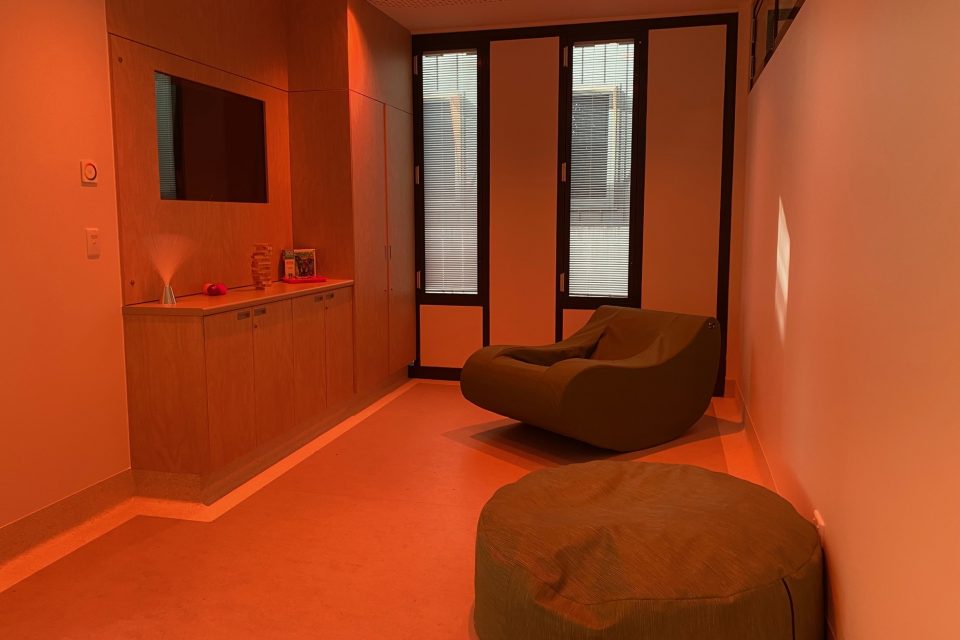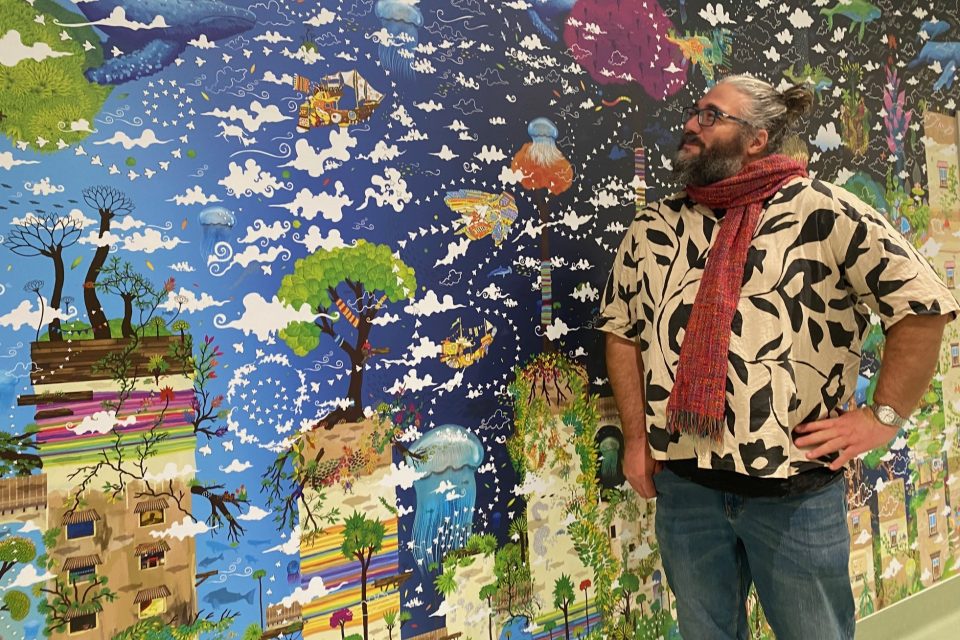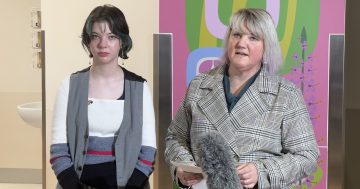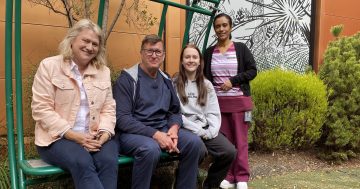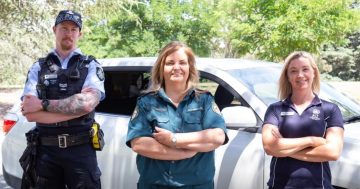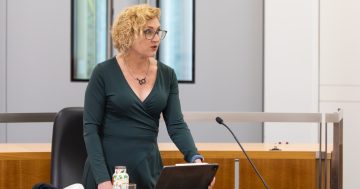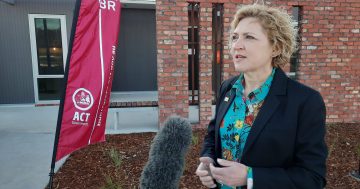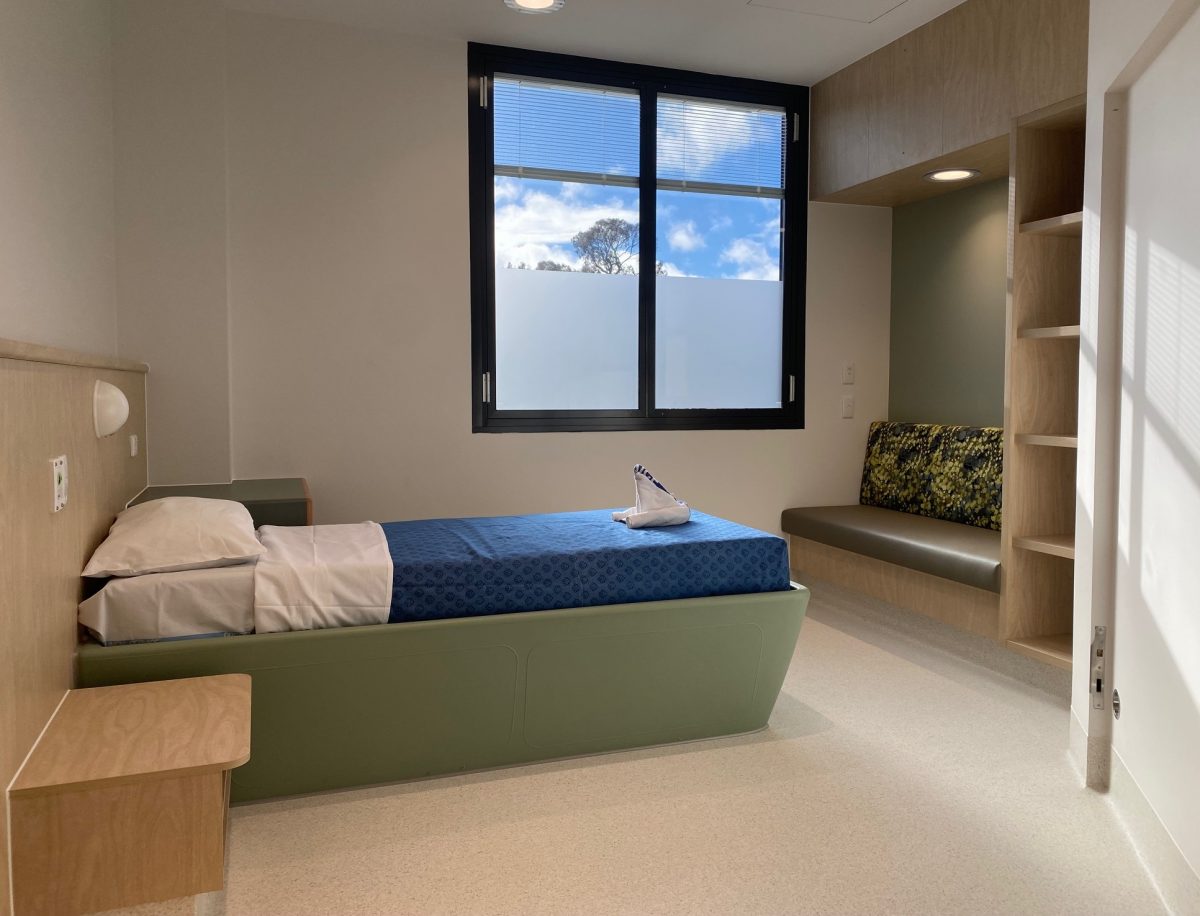
Six dedicated mental health beds comprise the refurbished adolescent mental health ward at Centenary Women and Children’s Hospital. Photo: Claire Fenwicke.
A dedicated space has been opened to keep teenagers experiencing difficulties with their mental health out of adult wards.
For the first time, Canberra’s public health system has dedicated mental health beds for young people as part of the recently completed expansion of the adolescent ward at the Centenary Women and Children’s Hospital.
The new inpatient unit has been designed specifically for young patients, with eight medical beds and six dedicated mental health beds on the ward.
A person’s individual needs will impact how long someone may stay on the ward; however, it is a voluntary unit.
Child and Adolescent Mental Health Services (CAHMS) clinical director Dr Ilona DiBella said having medical and mental health beds housed in the same unit was especially important given there were occasions when young people experiencing mental distress also presented to hospital with physical conditions or injuries.
She explained if young people had, for example, self-harmed or overdosed, they would have been admitted under pediatrics and received mental health support from visiting CAHMS practitioners.
In this ward the services could be side-by-side, with mental health specialists close by to support a young person while their medical needs were met.
Before the new ward, if a young person needed hospital support for mental health challenges, they were sent to the adult mental health ward.
Health Minister Rachel Stephen-Smith admitted this was not an ideal solution, so having this option available significantly improved how young people’s mental health could be treated and supported in the ACT.
“This has been the missing piece of the puzzle in terms of adolescent mental health services,” she said.
“We’ll now be able to admit young people into an appropriate therapeutic space to continue their healing journey.”
That’s not to say this will keep all teenagers out of the adult mental health unit or from travelling interstate for other services as the unit is not a secure one for people experiencing higher levels of psychosis or who may be on treatment orders.
And with only six dedicated beds available, young people may still need to be treated in the adult unit or other paediatric areas of the hospital if admission is needed.
“It’s always possible that someone might need to go to somewhere different than where they had first been expecting [to get care] and that can happen for a number of a whole range of different reasons,” Mental Health Minister Emma Davidson said.
“It might be related to their clinical needs. It might also be related to making sure they have the best transition home and support from family and carers.”
The ward is fully staffed with nurses, psychiatrists, medical officers, social workers, psychologists, allied health professionals and therapists, with patients already booked in to start using the space.
Along with the beds, the refurbished ward also features a games room, sensory space, family lounge and courtyard, with a therapeutic program to be delivered five days a week.
“Psychotherapy, occupational therapy and creative therapy are really important parts of treatment and recovery for young people,” Dr DiBella said.
“[Activities include] mindfulness, learning to be able to be present with things as they are … there are also different modules run on distress tolerance, emotional regulation, anxiety management, and we also have creative and exercise [options] as well.
“We’ve always provided appropriate care for people who needed admission, but now because it’s a centralised service, we can develop specialised therapeutic programs in the one space.”
Several artists were commissioned to create pieces to adorn the ward’s walls, transforming the space from a strictly clinical one to one of healing, which felt like it belonged to the patients.
Young people with lived experiences were consulted as part of the process, with the artworks also designed to withstand the rigorous cleaning needed in hospitals.
Paul Summerfield’s work was part of the old adolescent medical ward, with his piece updated for the new space.
“Over the years, I would get the odd email from parents saying, ‘you made a difference to my child’s life when we were at the ward’, whether they’re able to talk about the art or a change of scenery or just use it to create a game for their child,” he said.
“I feel honoured to have the work in the hospital.”
Yuin Nation artist Natalie Bateman integrated songlines and healing rivers into her pieces for the ward, bringing a sense of connection to country for every patient.
“[A river] is a place where you’re still and quiet; you can hear the birds and the change of the wind,” she said.
“It can also help [young people] know that when they leave, they can go to places like the river and connect with that.”
If you or someone you know needs help, you can contact:
Lifeline’s 24-hour crisis support line – 13 11 14
Suicide Call Back Service – 1300 659 467
Kids Helpline – 1800 551 800 or kidshelpline.com.au
MensLine Australia – 1300 789 978 or mensline.org.au.


